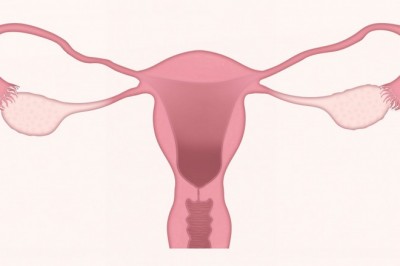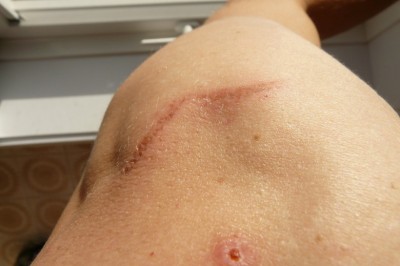Treating Quadriceps Tendon Rupture
Quadriceps tendon ruptures are not common and mostly occur in people who are older than forty years of age. It is much more common in patients with various diseases and who have had degenerative changes in the extensor mechanism of the knee. Ruptures typically occur on one side only and if they occur in both knees there are very likely to be significant predisposing factors. Ruptures of the patellar tendon are not as common as quadriceps tendon ruptures and occur more often in younger patients under forty years old. Early diagnosis and surgical repair of the ruptured tendon is essential as later repairs are much more difficult with poorer results. A typical action where a rupture of the quadriceps tendon is likely to occur is when the quads muscle is rapidly lengthening under stress and the foot is planted on the floor. A direct blow to the knee, a fall on the knee or a laceration to the area can all induce rupture. Ruptures are mostly likely to happen across an area of abnormal tissue in a tendon and this is suspected because a very small event can rupture a quadriceps tendon at times and that a large force does not rupture a normal tendon but nearby tissues instead. Conditions which increase the probability of rupture include arthritic diseases, long-time steroid use, infections, obesity and immobilisation. Knee steroid injections and various operations can facilitate tendon rupture. Rupture of the quadriceps tendon usually occurs through abnormal tissue in the first two centimetres just above the patella. Medical conditions can damage the blood supply to the tendon or alter the structure of the tendon. Diabetes can cause changes in blood vessels and obesity leads to increased tendon forces and degeneration within the tendon by replacement with fatty tissues. In the microscopic examination of ruptured tendons the vast majority were suffering from degenerative changes without inflammatory changes and commonly showing abnormalities of blood vessels and supply. Decreased blood flow leading to poor nutrition and low oxygen levels may be crucial factors in tendon degeneration. Typical presentation of a patient is for them to complain of acute knee pain, knee swelling and loss of functional knee ability after giving way of the knee, a fall or a stumble. They may not have had knee pain previously and the knee may have gone pop audibly at the time of the incident. Patients will have difficulty walking and examination will show swelling above the kneecap, bruising and tenderness. A gap in the tissues just above the patella may be clearly apparent to touch with the patella lying lower than normal over the knee. Active extension or straightening of the knee against gravitational force is the important factor to assess in the patients ability. An extension lag, where the patient cannot completely straighten their knee with their own power, is an indication of a potential rupture. The inability to straighten the knee will vary with the severity of the injury and partial ruptures are more difficult to diagnose. Any delay in assessing and diagnosing the patient is unhelpful and due to the difficulty in diagnosis it is common for this injury to be misdiagnosed with inevitably inappropriate management. The knee pain and swelling will reduce over time and the function of the quadriceps may improve, with improved walking ability. However, patients will show a hip hitch to bring the leg through and walk on a straight knee to maintain stability. However, the knee may give way frequently and climbing stairs will be difficult. Early operation to repair the defect is the standard treatment for acute and complete ruptures of the quadriceps tendon, with chronic ones also mostly suitable for surgery. Partial tears can be immobilised in a cast in a fully extended position for three to six weeks with a gradual physiotherapy rehabilitation regime until good function is achieved. 4-6 weeks in a cylinder plaster in full knee extension is the common management after this operation and weight bearing is usually permitted early with a frame or crutches. After the plaster is taken off then a hinged knee brace can be applied which can be adjusted to limit flexion range which can be gradually increased to allow greater and greater knee bend. Patients are then referred to physiotherapy to work at gradual increases in knee strength and ranges of motion until the knee is rehabilitated close to the function of the other knee. Jonathan Blood Smyth, editor of the Physiotherapy Site, writes articles about Physiotherapists, physiotherapy, physiotherapists in Birmingham, back pain, orthopaedic conditions, neck pain and injury management. Jonathan is a superintendant physiotherapist at an NHS hospital in the South-West of the UK.






















